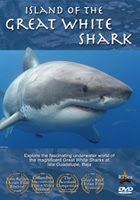 Perhaps you have heard it said that over 75% of the Earth's surface is covered by water but that we have explored less than 5% of the world's oceans. Some have said we know more about the backside of the moon than we do about the ocean depths right here at home.
Perhaps you have heard it said that over 75% of the Earth's surface is covered by water but that we have explored less than 5% of the world's oceans. Some have said we know more about the backside of the moon than we do about the ocean depths right here at home.Whenever scientists pull back the curtain and gaze into the depths, something new is always discovered - a new species, a new geographical formation, or a new process invaluable towards understanding the complex inner workings of marine ecosystems.
 The renown U.K. research vessel, RRS James Cook, has recently released pictures taken of several potential new species from the ocean depths along the northern portion of the Mid-Atlantic Ridge. Using the ROV named ISIS, which was able to view the creatures alive and free swimming at depths as deep as 8800 feet (2700m), researchers from the University of Aberdeen noted the marked differences in sealife on either side of a 10-mile wide span of the ridge (where northern cold waters meet warmer southern waters).
The renown U.K. research vessel, RRS James Cook, has recently released pictures taken of several potential new species from the ocean depths along the northern portion of the Mid-Atlantic Ridge. Using the ROV named ISIS, which was able to view the creatures alive and free swimming at depths as deep as 8800 feet (2700m), researchers from the University of Aberdeen noted the marked differences in sealife on either side of a 10-mile wide span of the ridge (where northern cold waters meet warmer southern waters).Click here to view a series of images taken by ISIS, published in the Guardian.
The Mid-Atlantic Ridge actually is the meeting of two major tectonic plates in the Atlantic Ocean
 and runs a considerable distance beginning near Greenland and extending all the way into the South Atlantic, below Africa. Along the way, there are deep trenches and mountain ridges. In the past, scientists have trawled the bottom to see what type of animals live there, but such methods often did considerable damage to the specimens. With today's advanced submersibles and ROVs, researchers are now able to see these animals unharmed and living in their natural environment.
and runs a considerable distance beginning near Greenland and extending all the way into the South Atlantic, below Africa. Along the way, there are deep trenches and mountain ridges. In the past, scientists have trawled the bottom to see what type of animals live there, but such methods often did considerable damage to the specimens. With today's advanced submersibles and ROVs, researchers are now able to see these animals unharmed and living in their natural environment.The deep oceans are a major part of the macro-marine ecosystem and so it is important that we study and gain a better understanding of these mysterious regions as to how they survive, how they interact with and impact shallower bodies of water, and how our activities can affect these great depths which, in turn, could alter the overall health of the oceans and the planet.







No comments:
Post a Comment